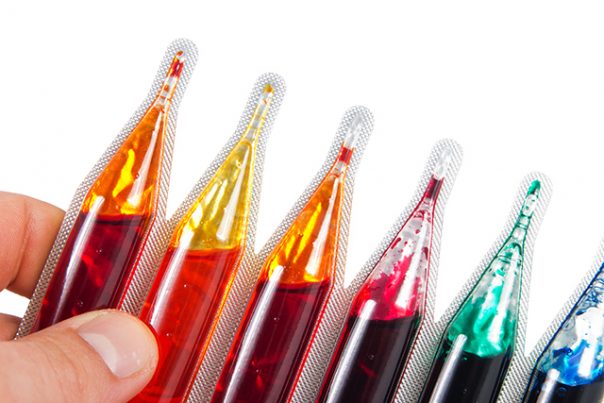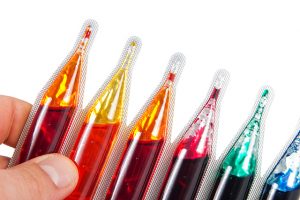
Red 2 – toxicity, side effects, diseases and environmental impacts
Thursday, November 23, 2017 by Janine Acero
http://www.naturalpedia.com/red-2-toxicity-side-effects-diseases-and-environmental-impacts.html

Red Dye No. 2 (also known as amaranth 123) is a food dye that was one of the first dyes to be declared legal in the U.S. It is widely used in food items and cosmetics until 1971, when Russian scientists announced that the dye caused cancer.
In 1976, the Food and Drug Administration (FDA) concluded that high doses of Red Dye No. 2 could cause cancer, based on animal studies.
Elsewhere, Red Dye No. 2 remains legal, and was declared harmless by the European Food Safety Authority in 2010.

List of known side effects
According to the PubChem database, Red Dye No. 2 can cause skin irritation, and serious eye irritation. It may also cause allergic reaction similar to nettle rash, in sensitive individuals. It can provoke asthma, eczema and hyperactivity and general respiratory tract irritation.
However, there is no data available regarding the carcinogenic potential of Red Dye No. 2 in humans. It is classified as “Group 3: The agent is not classifiable as to its carcinogenicity to humans”.
Body systems affected by Red No. 2
Red Dye No. 2 can adversely affect the eyes, skin and respiratory system. In some animal tests, doses of Red Dye No. 2 caused birth defects and fetal deaths.
Items that can contain Red No. 2
Common uses of Red Dye No. 2 include:
- Food coloring in alcoholic beverages, fruit-flavored fillings, red soft drinks, cake mixes, ice cream, jams, jellies, and many other processed foods. It is also used in France and Italy in the production of caviar.
- Industrial applications such as dyeing leather, staining wood, coloring paper coatings and coloring photographs.
Red Dye No. 2 is also used unlabeled in children’s red-colored paracetamol.
How to avoid Red No. 2
It is strongly recommended to avoid giving any substance containing Red Dye No. 2 or amaranth to children such as jellies, packet cake mixes, red soft drinks and other sweets.
Where to learn more
Summary
Red Dye No. 2, or amaranth 123, is a food dye widely used in comestibles (red soft drinks, alcoholic beverages, jellies, and candies), cosmetics (eyeshadow, blush, etc.) and industrial applications (coloring paper coatings, staining wood and dyeing leather).
Red Dye No. 2 is also used in some countries in the production of caviar and in children’s red-colored paracetamol.
According to the FDA, Red Dye No. 2 could cause cancer, based on animal studies. However, the PubChem database classified Red Dye No. 2 as “Group 3: The agent is not classifiable as to its carcinogenicity to humans”.
Red Dye No. 2 caused birth defects and fetal deaths based on animal studies. It is strongly recommended to avoid giving children any substance that may contain amaranth.
Sources include:





